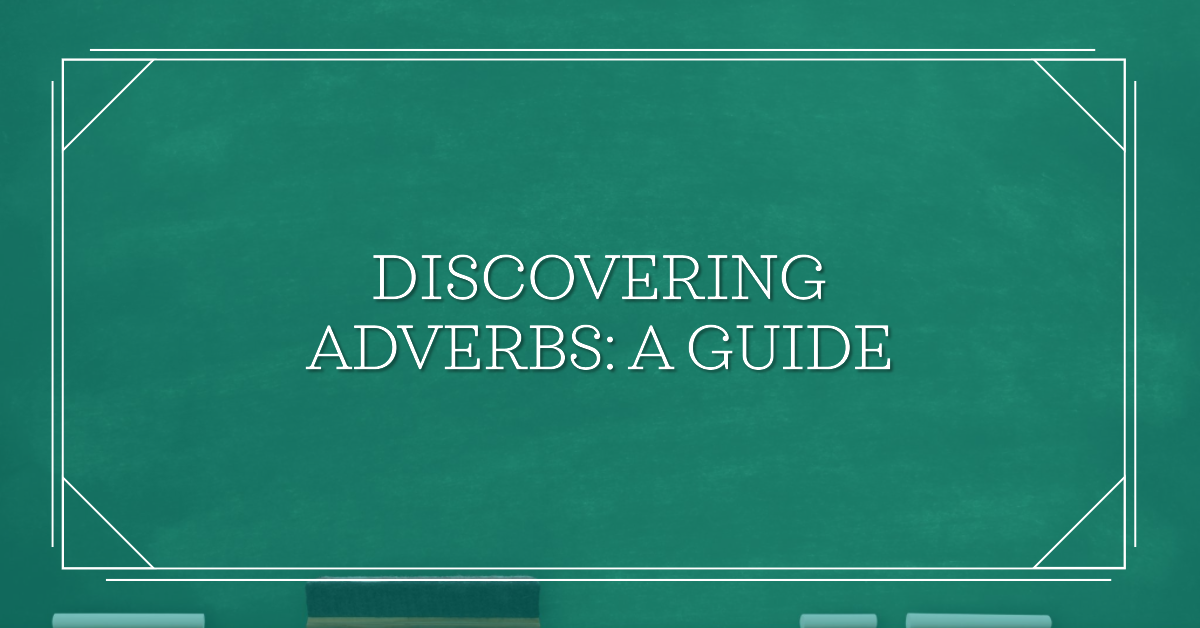In the realm of grammar, adverbs play a vital role in shaping the way we communicate. Understanding what adverbs are, their definitions, various types, and seeing examples in action can significantly enhance your grasp of language. In this comprehensive guide, we will embark on an enlightening journey through the world of adverbs, equipping you with all the knowledge you need to use them effectively.
What is Adverb?
An adverb is a versatile part of speech that modifies verbs, adjectives, or other adverbs. It adds more information to a sentence by answering questions like “how,” “when,” “where,” “why,” and “to what extent.” Adverbs can appear anywhere in a sentence, making them essential tools for effective communication.
Adverb Definition
To provide a precise adverb definition: Adverbs are words that modify or describe verbs, adjectives, or other adverbs. They often answer questions related to how, when, where, why, or to what extent an action is performed.
Types of Adverb
Adverbs come in various types, each serving a unique purpose. Let’s explore some of the key types:
Adverbs of Time
Adverbs of time tell us when an action occurs. Examples include “today,” “now,” “soon,” and “later.”
Adverbs of Place
Adverbs of place indicate where an action takes place. Common examples are “here,” “there,” “everywhere,” and “nowhere.”
Adverbs of Manner
Adverbs of manner describe how an action is performed. They add details to verbs. For instance, “quickly,” “carefully,” “elegantly,” and “enthusiastically” are adverbs of manner.
Adverbs of Frequency
Adverbs of frequency express how often an action happens. Words like “always,” “sometimes,” “rarely,” and “never” fall into this category.
Adverbs of Degree
Adverbs of degree show the intensity of an action. Examples include “very,” “too,” “almost,” and “completely.”
Examples of Adverb
Let’s dive into some real-life examples to illustrate the different types of adverbs:
- Adverbs of Time: She will arrive soon.
- Adverbs of Place: The treasure is buried here.
- Adverbs of Manner: She danced gracefully.
- Adverbs of Frequency: He visits the library often.
- Adverbs of Degree: It’s extremely hot today.
What is an Adverb?
You might be wondering, what exactly makes a word an adverb? The key lies in its function within a sentence. An adverb provides additional information about the action, making the sentence richer and more informative.
Types of Adverbs
We’ve already explored the main types of adverbs, but the world of adverbs is vast and diverse. Here are a few more categories you should know:
Adverbs of Certainty
Adverbs of certainty express the speaker’s confidence in a statement. Examples include “definitely,” “probably,” “certainly,” and “undoubtedly.”
Adverbs of Place and Time
Some adverbs serve a dual purpose, providing information about both time and place. Words like “hereafter,” “everywhere,” and “somewhere” fall into this category.
Adverbs of Comparison
Adverbs of comparison help us make comparisons between actions or things. Common adverbs of comparison include “more,” “less,” “better,” and “worse.”
What Are Adverbs?
By now, you’ve gained a solid understanding of what adverbs are, their definitions, and various types. But what are adverbs in the broader context of language? Simply put, adverbs are the colorful brushstrokes that paint vivid pictures in our sentences, adding depth and meaning.
Examples of Adverb
To reinforce your understanding, let’s delve into more examples of adverbs, showcasing their diversity and versatility:
- Adverbs of Certainty: She will definitely attend the party.
- Adverbs of Place and Time: The keys were somewhere in the living room.
- Adverbs of Comparison: This movie is better than the one we saw last week.
Now that we’ve explored the intricacies of adverbs, let’s address some common questions about them.
FAQs
What is the main role of an adverb in a sentence?
The primary role of an adverb is to modify or describe verbs, adjectives, or other adverbs. It provides additional information about how, when, where, why, or to what extent an action is performed.
Can adverbs appear anywhere in a sentence?
Yes, adverbs are flexible and can appear in various positions within a sentence. They can be placed before or after the verb, at the beginning or end of a sentence, or even in the middle, depending on the intended emphasis.
How can I identify adverbs in a sentence?
To identify adverbs, look for words that answer questions like “how,” “when,” “where,” “why,” and “to what extent.” These words typically function as adverbs.
Are there adverbs that modify other adverbs?
Yes, some adverbs modify other adverbs to provide more specific information. For example, in the phrase “very slowly,” “very” modifies the adverb “slowly.”
What are adverbs of frequency used for?
Adverbs of frequency are used to indicate how often an action occurs. They answer questions like “how frequently?” Examples include “always,” “sometimes,” and “never.”
Can adverbs of degree change the meaning of a sentence?
Yes, adverbs of degree can significantly alter the meaning of a sentence by indicating the intensity or extent of an action. For instance, “almost” and “completely” convey different levels of intensity.
Conclusion
In this comprehensive exploration of adverbs in grammar, we’ve dissected the very essence of these linguistic gems. We’ve not only defined what adverbs are but also ventured into their various types and provided practical examples to showcase their role in enriching language. Now, as we conclude, let’s reflect on the significance of adverbs and the beauty they bring to our expressions.
Adverbs are the unsung heroes of language, working quietly in the background to provide the crucial details that make our sentences complete. They answer the fundamental questions of how, when, where, why, and to what extent, allowing us to communicate with precision and nuance.
The ability to use adverbs effectively is a mark of language mastery, and it enhances our storytelling, writing, and communication skills. Adverbs provide color to our narratives, helping us vividly portray actions, emotions, and circumstances. Whether you’re a student learning the intricacies of grammar or a seasoned writer looking to refine your craft, a deep understanding of adverbs is indispensable.
In closing, adverbs are the seasoning that adds flavor to our sentences, the brush that paints the landscape of our storytelling, and the key to articulating our thoughts. By mastering the art of using adverbs, you’re empowering yourself to communicate with elegance, precision, and style. So, embrace the world of adverbs, experiment with them, and watch your language skills flourish.




